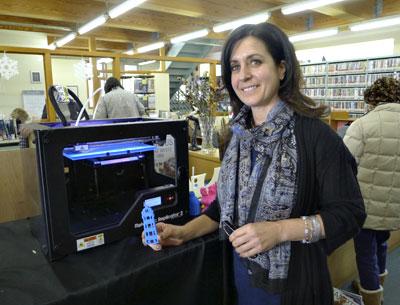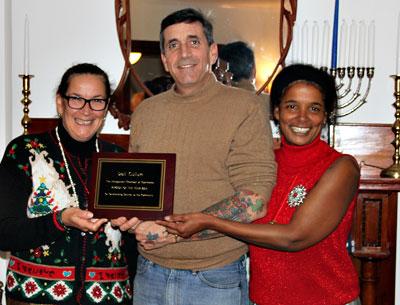LIBRARY: New Director Wades Right In
LIBRARY: New Director Wades Right In

Denise DiPaolo started working as the director of the Montauk Library on Jan. 2. On Tuesday, amid a flurry of activity — shelves were being rearranged, a computer was acting up — she was already the calm in a storm.
A resident of Sag Harbor, Ms. DiPaolo worked for the Shelter Island Library for seven years before she accepted the position in Montauk to replace Karen Rade, who retired at the end of last year. When the news that she was leaving circulated through the tiny island, this newspaper received a letter from a patron there telling Montauk residents how lucky they were to be getting her.
Ms. DiPaolo believes her experience working in an isolated area was the key to her hiring. “I think the board during the interview process was comforted by the fact that I get it; I was prepared for isolation. You can’t get any more remote than that,” she said of Shelter Island.
Surrounded by water, Montauk, she said, emits good energy. “It’s magical. I love it,” she said, adding that the people she has met since working in the hamlet are also impressive. She said people have been extremely welcoming, even visiting her office to say hello and introduce themselves.
And she has high praise for the Friends of the Montauk Library, a group that holds fund-raisers to supplement the state funding the library receives, allowing it to offer a wider range of programs and training.
The director’s position is full time with flexible hours, which she plans on using to attend the many programs the library offers outside of its regular business hours. So far, she has even managed to power through three audiobooks during her commute.
Before she worked on Shelter Island, she was the librarian supervisor at the Rogers Memorial Library in Southampton. She majored in English at the State University at Albany and double-minored in business administration and rhetoric and communications, receiving her Bachelor of Arts in 1988. She received her master’s degree in library and information science from Long Island University in 1991 and was certified in supervisory skills for managers through Stony Brook University in 2002.
As the director, Ms. DiPaolo looks forward to getting more involved with local organizations, such as the Montauk Chamber of Commerce, the Montauk Lions Club, and the Montauk School. She also attends various meetings with other library directors throughout New York State to share and learn about new trends and technology. “You’re a perpetual student in the library business,” she said.
“It’s a dynamic industry; there’s always something new. A library director wears many hats,” she said. Even when she is not working, library functions are a major part of her life. Indeed, her partner is Dennis Fabiszak, the director of the East Hampton Public Library.



